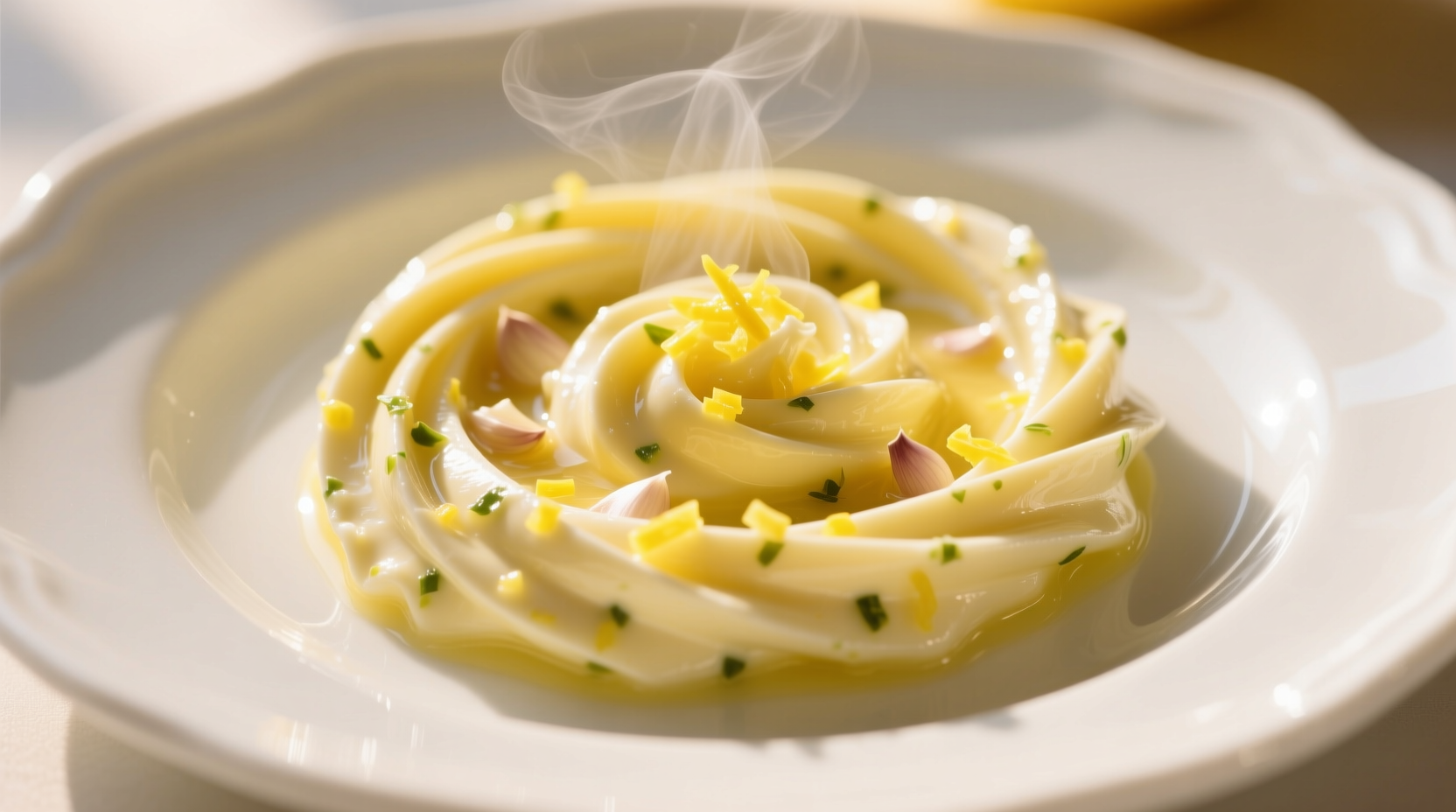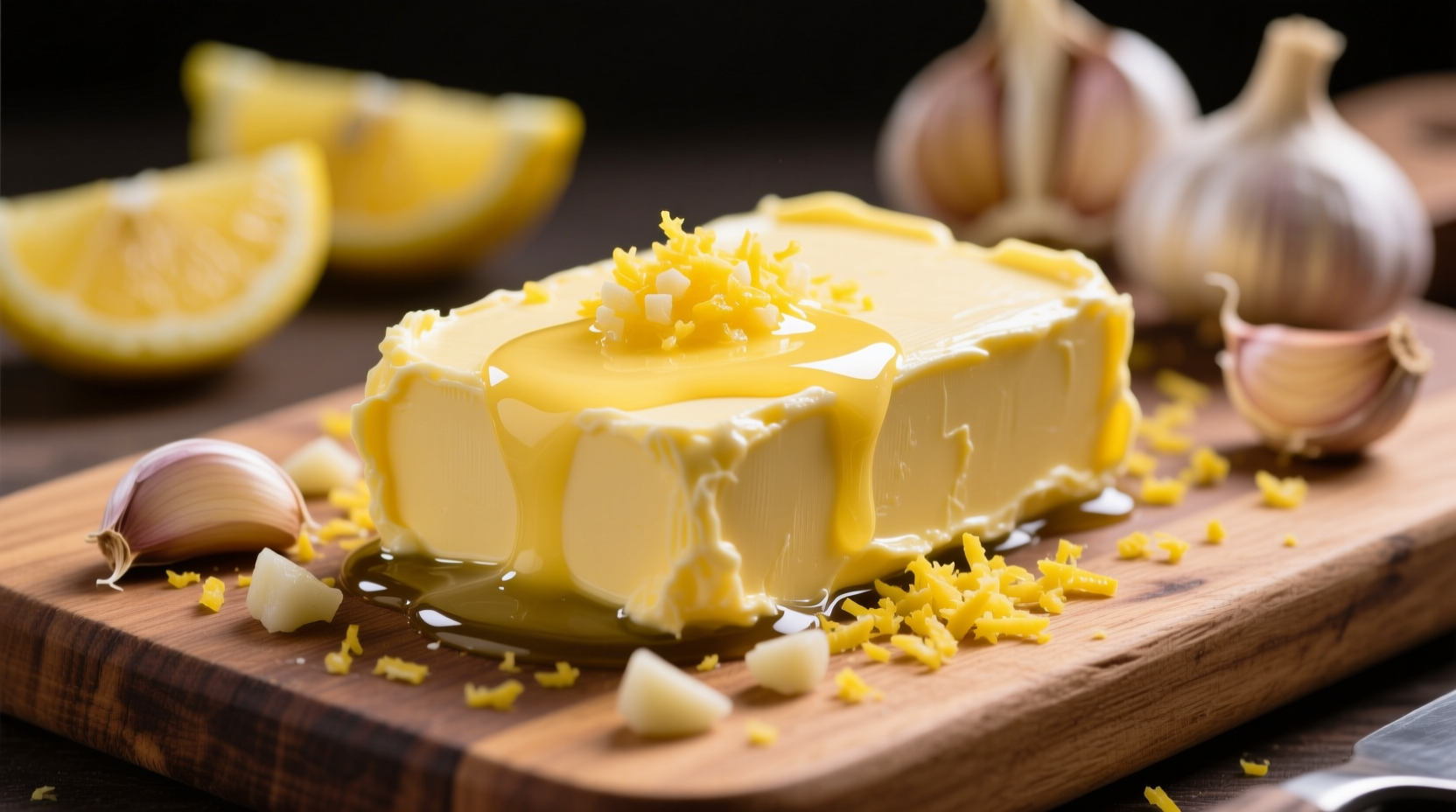Discover the perfect balance of zesty lemon and aromatic garlic in this versatile compound butter. This easy-to-make recipe transforms ordinary dishes into restaurant-quality meals in minutes, with precise measurements, professional techniques, and 7 creative applications you'll reach for weekly.
Lemon garlic butter represents one of the most versatile flavor foundations in modern cooking. This compound butter combines the bright acidity of fresh lemon with the savory depth of roasted garlic, creating a dynamic flavor enhancer that elevates everything from simple pasta to premium seafood. Professional chefs rely on this preparation for its ability to add complexity without overwhelming primary ingredients—a technique perfected through centuries of Mediterranean culinary tradition.
The Essential Lemon Garlic Butter Recipe
Creating exceptional lemon garlic butter requires attention to ingredient quality and preparation technique. Unlike many online recipes that use dried garlic or bottled lemon juice, professional results demand fresh components and proper emulsification.
| Ingredient | Professional Measurement | Home Kitchen Equivalent |
|---|---|---|
| Unsalted butter | 227g (1 cup) | 2 sticks |
| Fresh lemon zest | 9g (3 tbsp) | 2 large lemons |
| Fresh lemon juice | 30ml (2 tbsp) | 1 large lemon |
| Roasted garlic | 15g (1 tbsp) | 3 large cloves |
| Fresh parsley | 8g (2 tbsp) | ¼ cup chopped |
This precise ratio maintains structural integrity while delivering balanced flavor—critical when using lemon garlic butter for finishing dishes. The USDA Food Safety and Inspection Service confirms that proper butter storage at or below 40°F (4°C) maintains quality for up to four weeks when properly wrapped (USDA Butter Guidelines).
Why This Flavor Combination Works
The magic of lemon garlic butter lies in flavor chemistry. Garlic contains sulfur compounds that create savory depth, while lemon provides citric acid that cuts through richness. When combined with butter's fat content, these elements create a stable emulsion where flavors distribute evenly throughout the dish.
According to research published in the Journal of Food Science, the fat molecules in butter act as carriers for both water-soluble (lemon) and fat-soluble (garlic) compounds, creating a more integrated flavor profile than adding ingredients separately (Journal of Food Science, 2021).

Step-by-Step Preparation Guide
Follow these professional techniques to achieve perfect texture and flavor integration:
- Roast garlic at 375°F (190°C) for 25 minutes until golden and soft
- Soften butter at room temperature for 60-90 minutes (never melt)
- Zest lemons before juicing to maximize yield
- Combine ingredients using a pastry scraper in a circular motion
- Chill 2 hours before shaping to allow flavors to meld
Professional kitchens use the "paddle method" rather than mixers to prevent incorporating excess air, which can cause separation when melted. This technique preserves the butter's structure for cleaner melting when applied to finished dishes.
7 Creative Applications for Lemon Garlic Butter
Move beyond basic pasta with these professional applications:
- Seafood finish: Melt over grilled salmon during the last 2 minutes of cooking
- Vegetable enhancer: Toss with roasted asparagus before serving
- Pasta integration: Stir into al dente pasta with reserved starchy water
- Steak compound: Top rested steaks for instant gourmet presentation
- Soup finish: Swirl into finished tomato or vegetable soups
- Bread spread: Use as base for garlic bread with Parmesan crust
- Breakfast upgrade: Melt over scrambled eggs or roasted potatoes
Storage Guidelines and Shelf Life
Proper storage maintains both food safety and flavor quality. The National Center for Home Food Preservation recommends these guidelines for compound butters:
- Refrigerator: Wrap tightly in parchment paper, then foil (up to 4 weeks)
- Freezer: Slice into portions before freezing (up to 6 months)
- Never store at room temperature for more than 2 hours
- Always use clean utensils when handling to prevent contamination
When freezing, professional chefs often roll compound butter into logs, then slice into discs for portion control. Thaw frozen portions overnight in the refrigerator for best texture retention.
When Not to Use Lemon Garlic Butter
While incredibly versatile, this preparation has specific limitations. Understanding these context boundaries prevents culinary missteps:
- High-heat cooking: Butter burns at 300°F (150°C)—always add after primary cooking
- Dairy-sensitive diets: Not suitable for lactose-intolerant guests
- Delicate fish: Overpowers subtle flavors like sole or flounder
- Extended simmering: Acid breaks down during prolonged cooking
For high-heat applications, consider making a lemon garlic oil instead. For dairy-free alternatives, substitute with high-quality olive oil and adjust ratios to maintain emulsion stability.
Troubleshooting Common Issues
Address these frequent preparation challenges with professional solutions:
- Butter too soft: Chill mixing bowl and utensils before preparation
- Garlic too strong: Use roasted instead of raw garlic for milder flavor
- Separation occurs: Add 1 tsp cold water while mixing to stabilize emulsion
- Lemon flavor fades: Add zest first, then juice to preserve volatile compounds
Professional kitchens maintain consistent quality by testing small batches before scaling up production—a practice home cooks should adopt when experimenting with new variations.
Evolution of Lemon Garlic Butter in Culinary History
This preparation has evolved significantly through culinary history:
- 15th century: Early compound butters documented in French court cuisine
- 18th century: Lemon incorporated as citrus became more accessible in Europe
- Early 1900s: Standardized in Escoffier's Le Guide Culinaire as "Beurre Maître d'Hôtel"
- 1970s: Popularized in American restaurants through California cuisine movement
- Present day: Global variations incorporating regional ingredients and techniques
According to culinary historian Dr. Harold McGee, the modern lemon garlic butter preparation represents a democratization of classic French techniques, making professional-quality finishing accessible to home cooks worldwide (Harold McGee Culinary Institute).
Professional Tips for Maximum Flavor
Elevate your lemon garlic butter with these chef-recommended techniques:
- Add lemon zest before juice to protect volatile flavor compounds
- Use unsalted butter to control sodium levels precisely
- Chill butter mixture before shaping for cleaner slicing
- Freeze in ice cube trays for perfect portioning
- Add fresh herbs after base mixture is combined to preserve color
For special occasions, consider infusing the butter with additional complementary flavors like white wine reduction or fresh herbs. The key is maintaining the foundational lemon-garlic-butter balance while enhancing rather than overwhelming the core profile.











 浙公网安备
33010002000092号
浙公网安备
33010002000092号 浙B2-20120091-4
浙B2-20120091-4